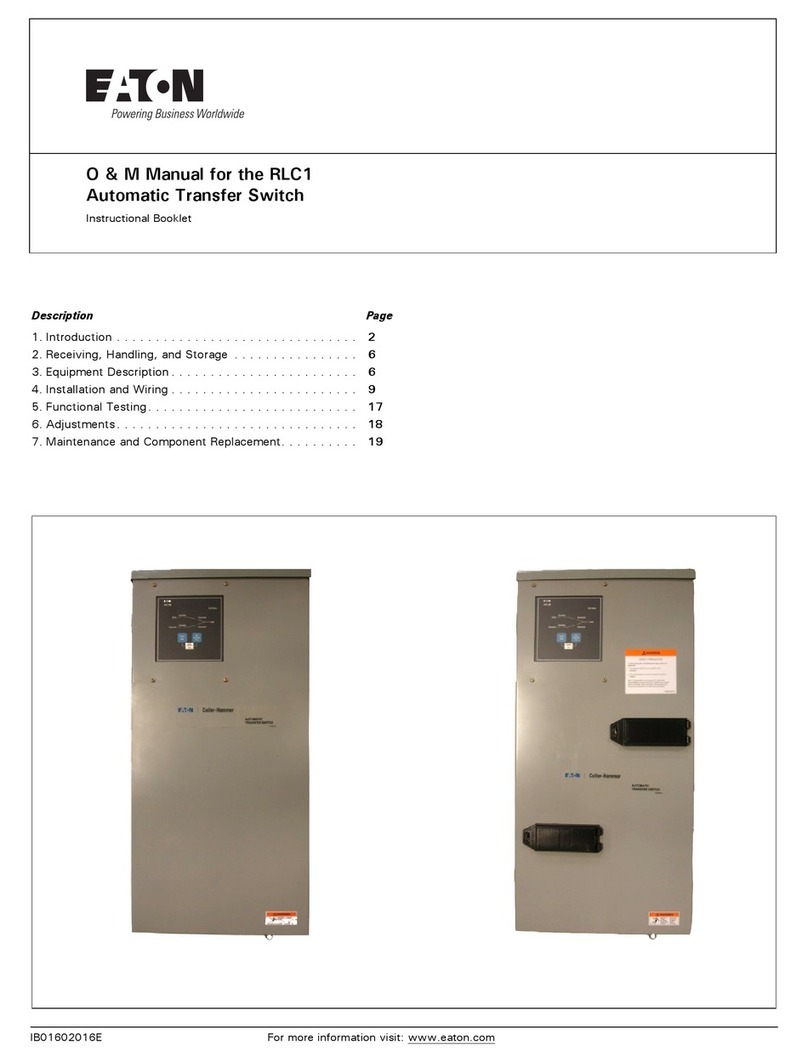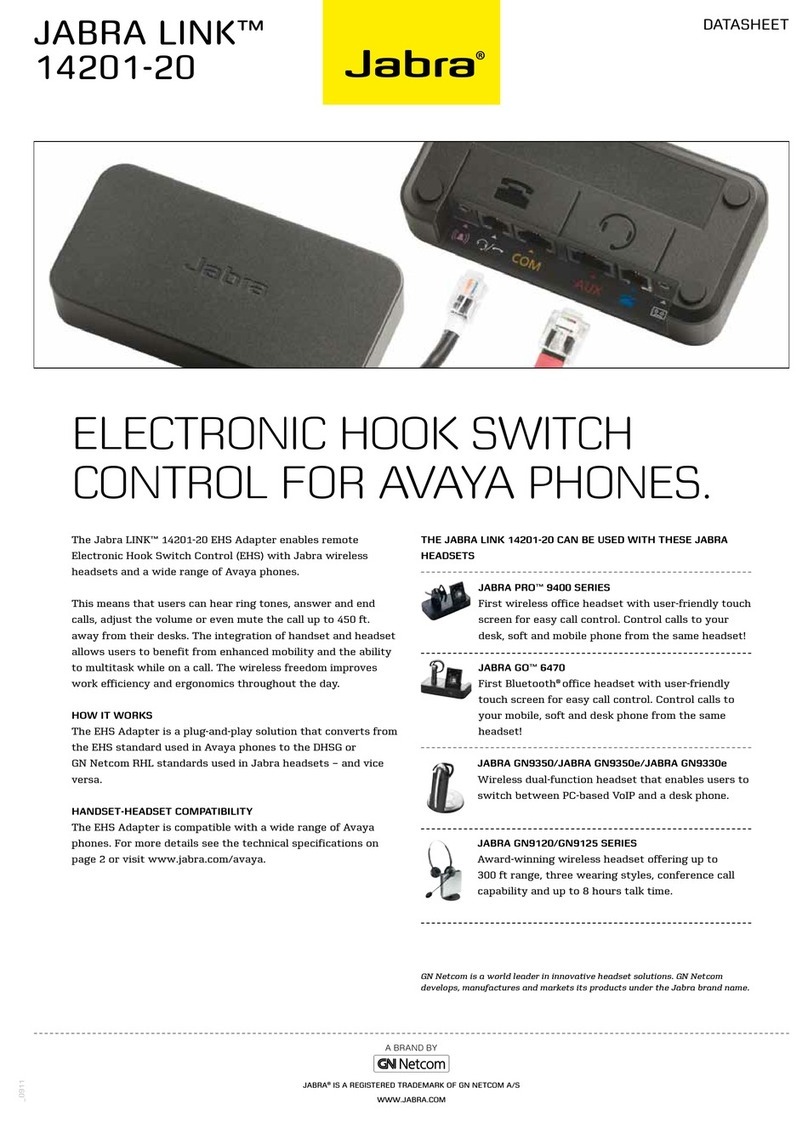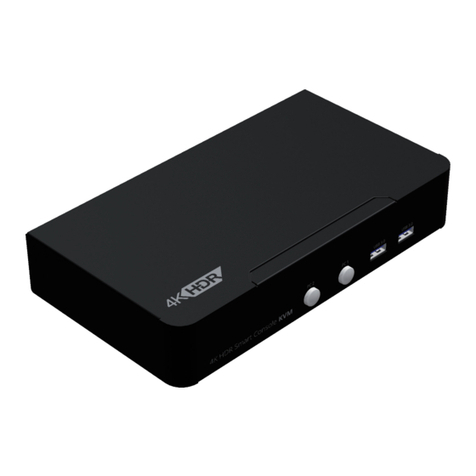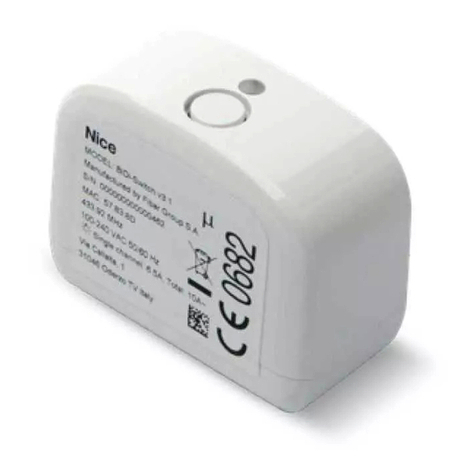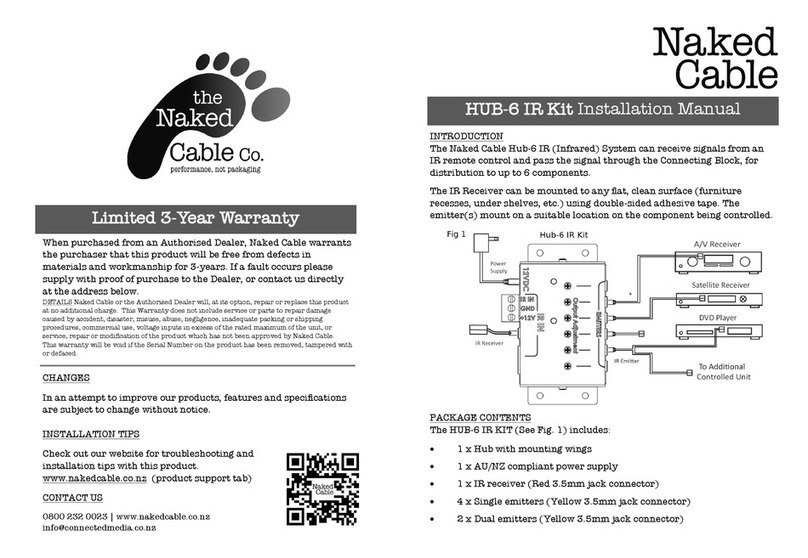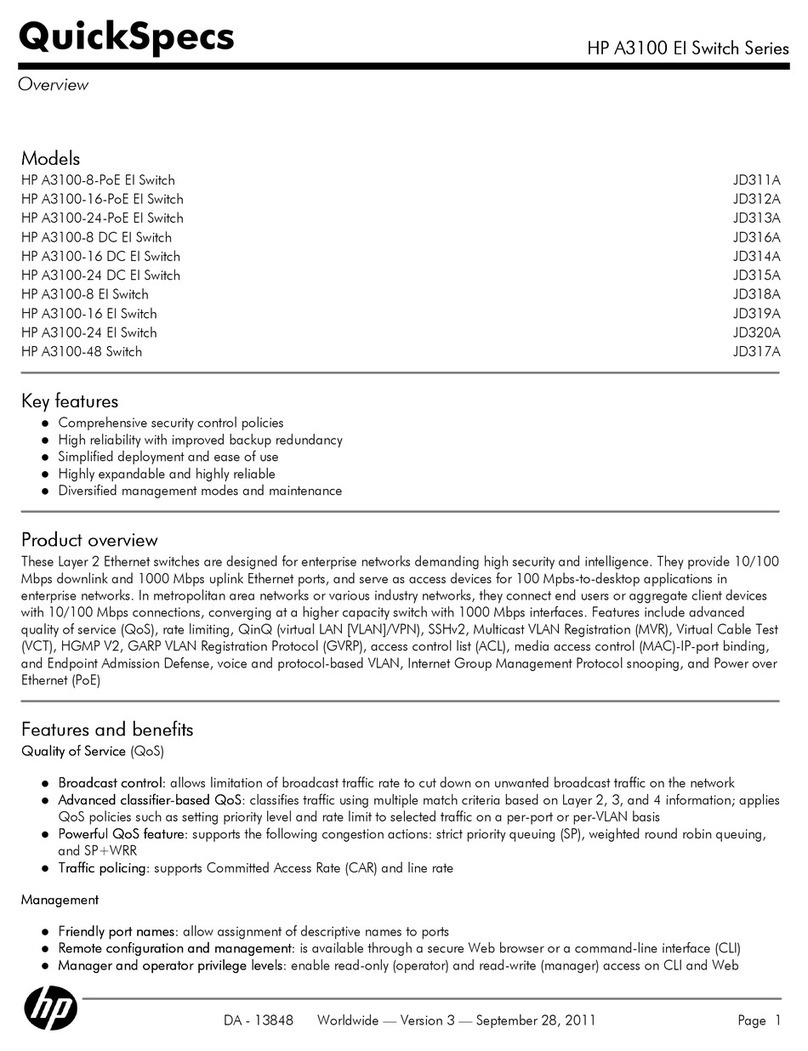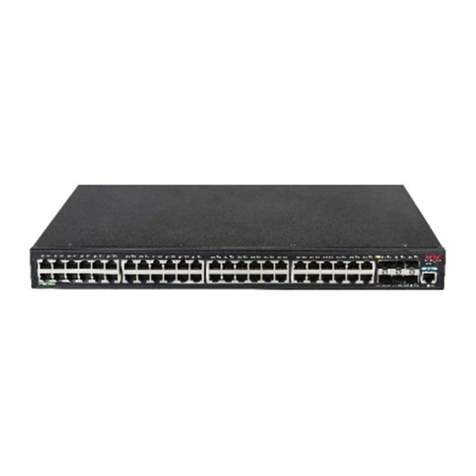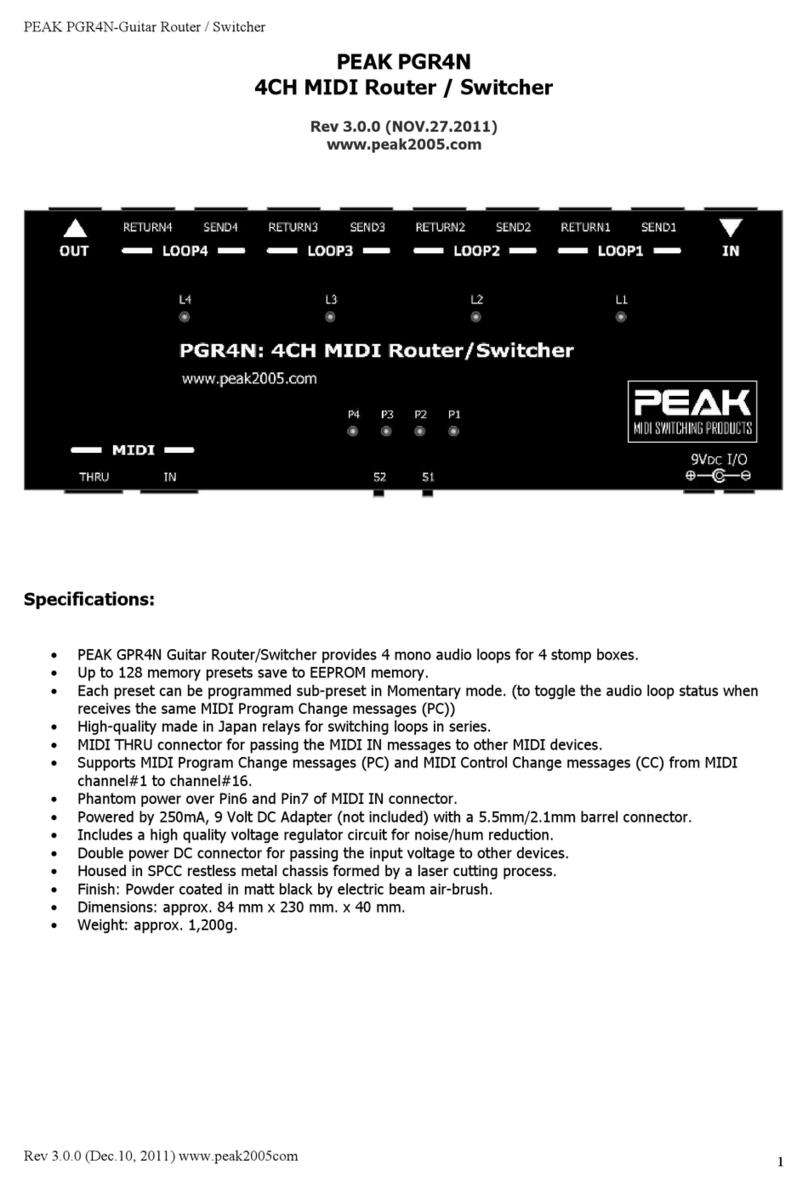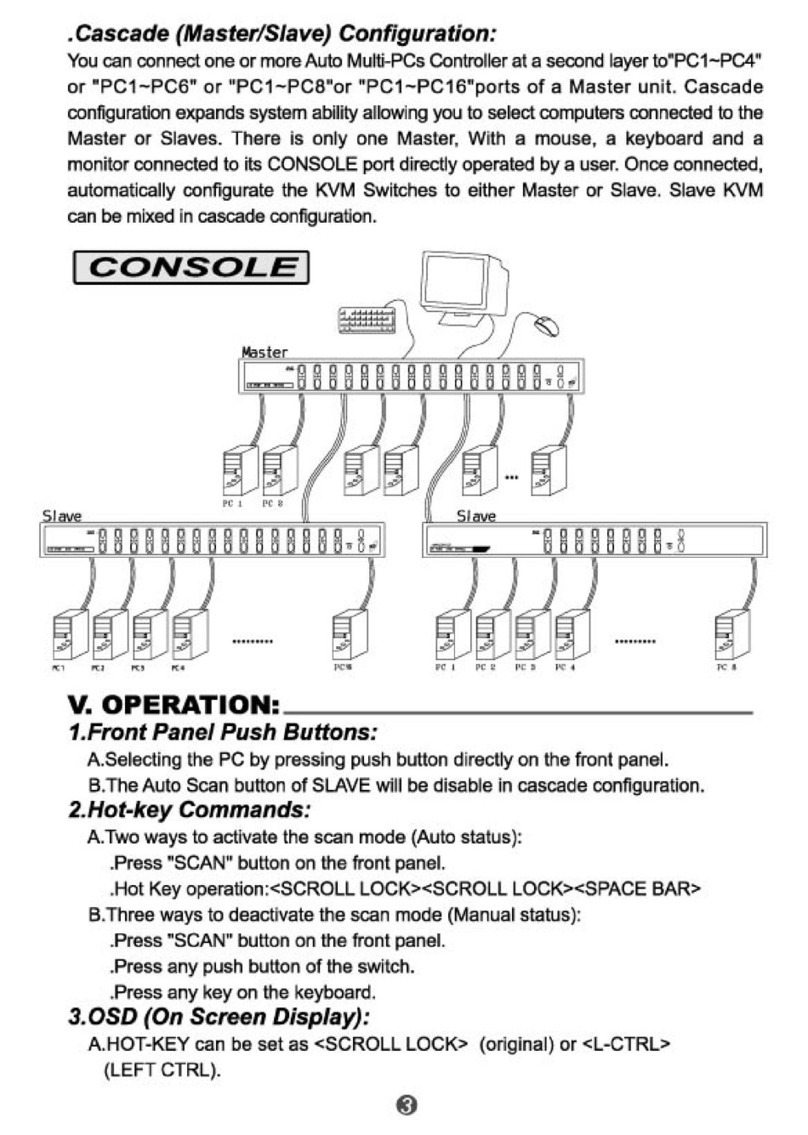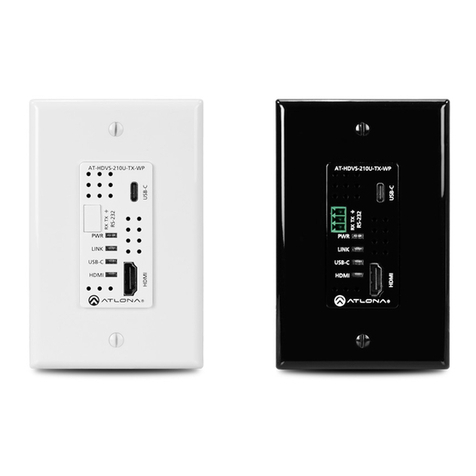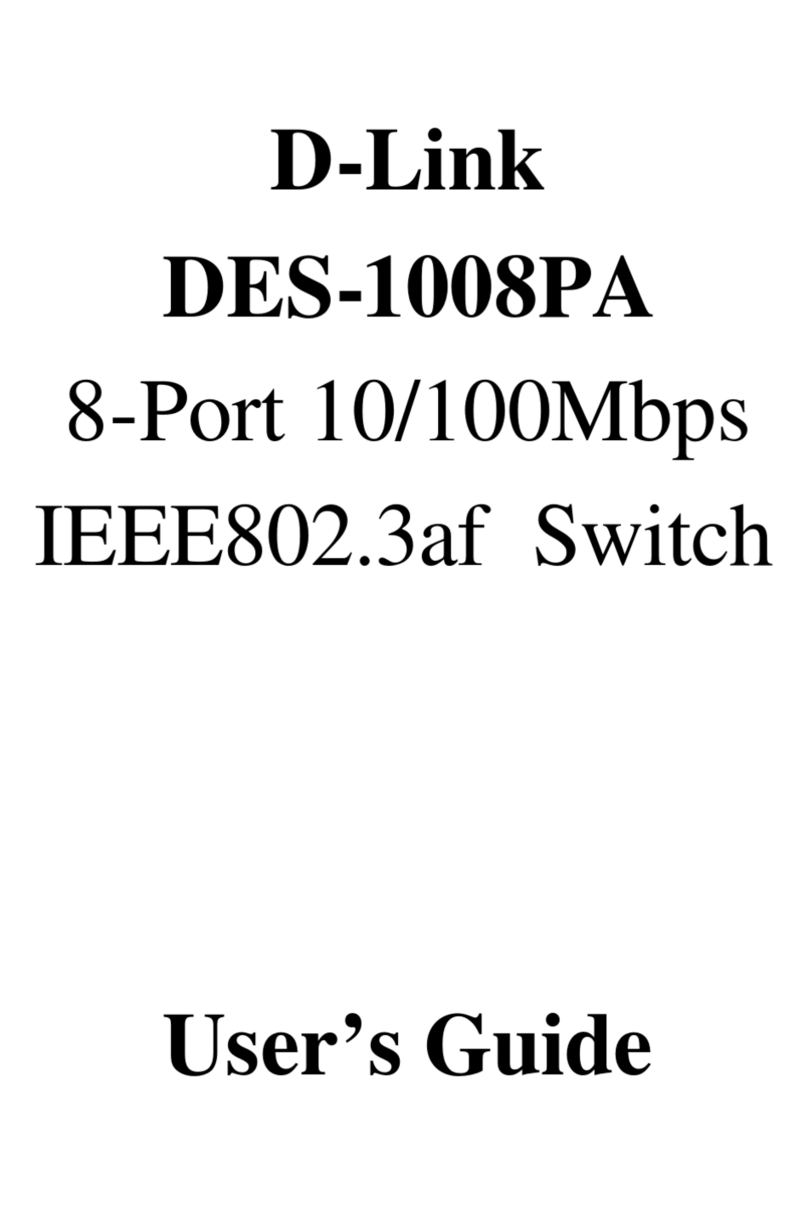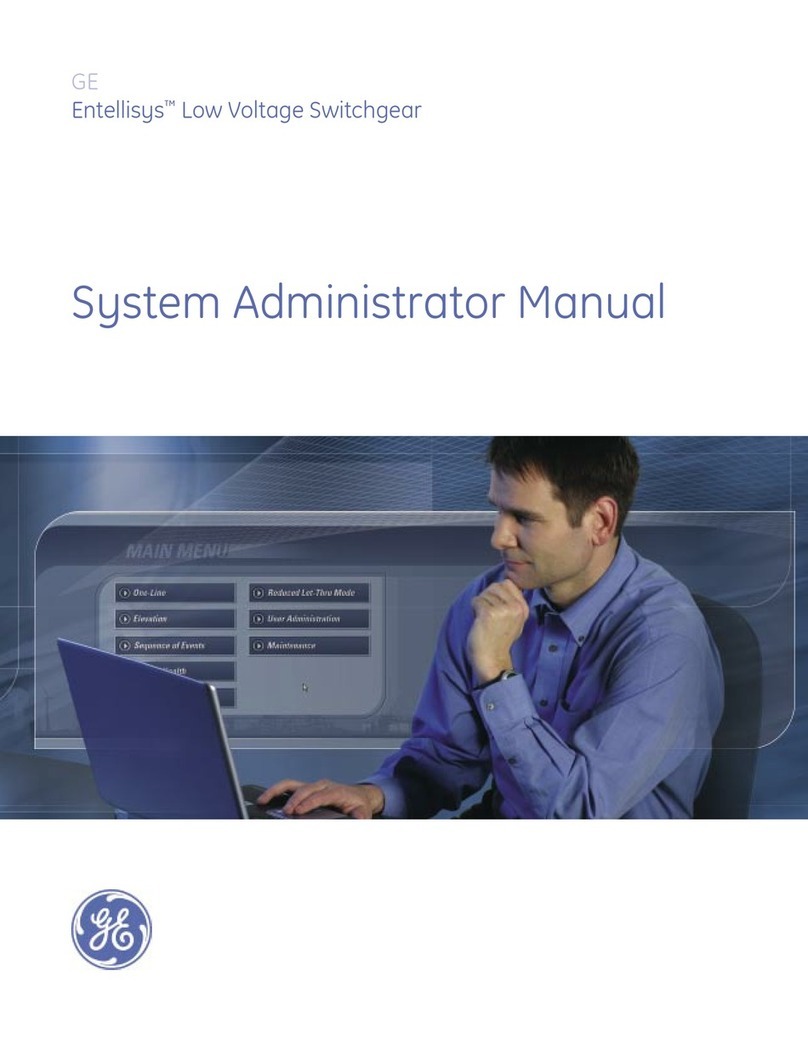Seneca Z-PC SERIES User manual

ENGLISH 1/8
MI002290-E
Z-DAQ-PID
Z-PC Line
Analog, universal IN/OUT
conversion and PID regulation
with ModBUS RTU protocol
based on RS485 serial interface
INSTALLATION MANUAL
Conversion without PID
regulation
Manual (constant output
operated by ModBUS)
Conversion with PID
regulation
Chapter index
Page
1. Identification data
1
2. Preliminary warnings
2
3. Description and characteristics
3.1 Module description
3.2 General characteristics and features
2
4.
4.1 Input
4.2 Output
4.3 Connections
4.4 1500 Vac insulations
4.5 Power supply
4.6 Module case
4.7 Environmental conditions
4.8 Standards
Technical specifications
2
5. Electrical connections
5.1 Safety measures before use
5.2 RS485 and RS232 serial interface
5.3 Connections
5.4 Screw terminals connection
4
6. Parameters for use
6.1 Setting parameters
6.2 Communication parameters
6.3 Dip-Switch tables
6.4 Default configuration
6
7. Most important RS485 registers
8
8. Signalling LEDs
8
9. Decommissioning and disposal
8
10. Purchase Order Code
8
This document is property of SENECA srl. Duplication and reproduction of its are forbidden (t ), if not authorized.
Contents of present documentation refers to products and technologies described in it. Though we strive for reach perfection
, all technical data contained in this document may be modified or added due to technical and commercial needs; it’s
impossible to eliminate mismatches and discordances completely. is anyhow subjected to
periodical revision. I don’t hesitate to contact our structure or to write us to e-mail addresses as above
mentioned.
hough
f you have any questions
partial
continually
Contents of present documentation
SENECA s.r.l.
Via Germania, 34 – 35127 – Z.I. CAMIN – PADOVA – ITALY
Tel. +39.049.8705355 – 8705359 Fax. +39.049.8706287
Internet site: Technical assistance:
Commercial reference:
www.seneca.it [email protected]
3 operating modalities:
It is a registered International trademark ® 2010 All rights reserved. .

ENGLISH 2/8
MI002290-E
3.1 MODULE DESCRIPTION
The Z-DAQ-PID module acquires 1 universal input signal and converts it to an analog format
(with PID regulation), sent through 1 universal and isolated output signal.
3. DESCRIPTION AND CHARACTERISTICS
2. PRELIMINARY WARNINGS
Before carrying out any operation it’s mandatory to read all
. Only electrical-skilled technicians can use the module described in this user
Manual.
the content of this user
Manual
No warranty is guaranteed in connection with faults resulting from improper use, from
modifications or repairs carried out by unauthorised personnel on the
module, or if the content of this user Manual is not followed.
Manufacturer-
Only the repair the module or to replace damaged
components.
Manufacturer is authorized to
3.2 GENERAL CHARACTERISTICS AND FEATURES
-3 operating modalities:conversion with/without PID regulation,manual(constant output)
-Input: voltage type, current type, potentiometer type, thermocouple(TC) type, RTD
(Resistance Temperature Detector) type, millivoltmeter type
-Output (analog or ON/OFF): voltage type, current type
-1500 Vac insulation between: input, power supply, output and RS485-bus (figure 1)
-Configuration of the module (node) address and baud-rate by Dip-Switches
-It’s possible to add/remove the module to/from RS485-bus without disconnecting the
communication or power supply
-Switching automatically RS485 to RS232 or vice versa
4.1 INPUT
4. TECHNICAL SPECIFICATIONS
Number
1
Resolution
14 bits
Sampling time
Configurable between: 5 ms («Fast», no rejection), 16.66 ms
(rejection to 60Hz) or 20 ms (rejection to 50Hz)
Filter
Configurable between: 0(no filter is applied),from 1(min) to 19(max)
Response time
Sampling time + 6 ms
Voltage-type IN
Range is configurable:from 0 V to 10 V.Input impedance:120 kΩ
Current-type IN (mA-
passive module/mA-
active module)
Scale range is configurable:from 0 mA to 20 mA.Internal shunt:50
It’s possible to power the sensor by:itself(mA-passive module) or
module(mA-active module) using #7 screw terminal (max25 mA to
max17 V,short-circuit protected)
Ω.
Potentiometer-type
IN
Scale range is configurable:from 1 k to k (with parallel
resistor R= 330 to connect externally). Excitation current: .
Input impedance:>5 M .Automatic d
Ω Ω
Ω
Ω
100
1 mA
etection if a interruption occurs
Thermocouple-type
IN (1)
For TC type: J, K, R, S, T, B, E, N. Input impedance: > 5 M
Automatic detection if a TC interruption occurs
Ω.
RTD-type IN (1)
For RTD type:P 00,P 500,P 100T1 T T 0,N 100.Resistance measure(for
2,3,4-wires connection) and wire-resistance measure(for 3,4-wires
connection).Excitation current:1.1 mA(PT100)and 0.11 mA(PT1000,
PT500).Automatic detection if a wire or RTD interruption occurs
I

ENGLISH 3/8
MI002290-E
(1)
(2)
(3)
(4)
(5) : 0.005 %/ , max 20Ω Ω
For the input scale ranges, see pag.7.
Influence of wires resistance: 0.1 V/
Output zero if t < 400°C
For RTD type: P 00, P 500, P 1000, N 100. All the errors have to be calculated with
reference to resistive value
Influence of wires resistance
μ Ω
T1 T T I
Errors max
measuring range
related to
Accuracy
Thermal
stability
Linearity error
EMI
Voltage or current-
type input
0.1%
0.01%/°K
0.05%
<1% (2)
TC-type input: J, K,
E, T, N
0.1%
0.01%/°K
0.2°C
<1% (2)
TC-type input: R, S
0.1%
0.01%/°K
0.5°C
<1% (2)
TC-type input: B (3)
0.1%
0.01%/°K
1.5°C
<1% (2)
Cold junction
compensation
(for TC-type input)
2°C between
0-50°C
/
/
/
POT-type input
0.1%
0.01%/°K
0.1%
<1%
RTD-type input (4)
0.1%
0.01%/°K
0.02%( )
0.05%( )
if t>0°C
if t<0°C
<1% (5)
4.2 OUTPUT
Number
1
Resolution
14 bits
Signal-amplitude
limiting
The output signal can be amplitude-limited by a «output limiter»
Voltage-type OUT
Configurable between: 0-5 V, 0-10 V (with minimum load resistance: 1
k ).Analog or ON/OFF signal typeΩ
Current-type OUT
(active or passive)
Configurable betw
.Analog or ON/OFF signal type
een: 0-20 mA, 4-20 mA (with maximum load
resistance: 600 ). «Active current»=the output: already powered
on, needs to be connected to the passive module; «passive
current»=the output: powered off, needs to be connected to the active
module
Ω
Errors related to
max measuring
range
Accuracy
Thermal
stability
Linearity error
EMI
Voltage-type OUT
0.1%
0.01%/°K
0.01%
< 1%
Current-type OUT
(active or passive)
0.1%
0.01%/°K
0.01%
< 1%
4.3 CONNECTIONS
RS485 interface
IDC10 connector for DIN 46277 rail (back-side panel, figure 4).
RS232 interface
Jack stereo connector:plugs into COMport(
)
3.5 mm front-side
panel
Millivoltmeter-type
IN
Scale range is configurable between: -10 mV to 80 mV. Input
impedance: > 5 MΩ

MI002290-E ENGLISH 4/8
4.4 1500 Vac INSULATIONS
The isolation voltage between:
-power supply
-analog input
-analog output
-RS485-bus
is (figure 1).1500 Vac
4.5 POWER SUPPLY
Supply voltage
10 – 40 Vdc or 19 – 28 Vac ( 50Hz - 60Hz) by: screw terminals 2,3 or
IDC10 connector
Power consumption
Min: 0.5W; Max: 2W
The power supply transformer must comply with EN60742(Isolated transformers and safety
transformers ).requirements
4.7 ENVIRONMENTAL CONDITIONS
Operating
temperature
-10°C ... +65°C
Humidity
30 - 90% to 40°C not condensing (during operation)
Max enviroment
pollution degree
2
Storage temperature
-20°C ... +85°C
4.6 MODULE CASE
Case-type
PBT, black
Dimensions
Width W = 100 mm, Height H = 112 mm, Depth D = 17.5 mm
Terminal board
Removable 3-way screw terminals 5.08 mm,sections 2.5mm2
: pitch
Protection class
IP20 (International Protection)
The module complies with the following standards:
-EN 61000-6-4/2007 (electromagnetic emission, in industrial environment)
-EN 61000-6-2/2006
-EN 61010-1/2001(safety). All electrical circuits must be isolated with double isolation from
other circuits
(electromagnetic immunity, in industrial environment)
with dangerous voltage.
4.8 STANDARDS
Power on the module with < 40 Vdc or < 28 Vac voltage supply. These upper
limits must not be exceeded to avoid serious damage to the module.
The module is designed to be installed on DIN 46277 rail (figure 5) in vertical position.
5. ELECTRICAL CONNECTIONS
5.1 SAFETY MEASURES BEFORE USE
RS 232
Power supply
OUT
OUT-V
OUT-mA
1
IN-V
IN-mA
IN-POT
IN-TC
IN-RTD
ModBUS
RS485
GND
AB
AC, DC
IN
IN-mV

MI002290-E ENGLISH 5/8
It is forbidden to obstruct the module ventilation openings.
It is forbidden to install the module near heat-emitting devices.
Power off the module before connecting: RS232 serial interface, RS485 serial
interface, input, output.
5.2 RS485 AND RS232 SERIAL INTERFACE
The module is designed to data interchange according to the ModBUS protocol rules,
implemented by RS232 serial interface and RS485 serial interface
.
.
RS
The RS232
communication has priority over the 485
communication
(with unchangeable parameters)
The module has a Jack
stereo connector in order
to connect its to
(figure 2).
RS232-
b u s c o m m u n i c a t i o n
automatically
2
GND Tx Rx
5.3 CONNECTIONS
Switch to «0» (OFF state) all
the Dip-Switches (120
Terminator) on DIN rail.
Ω
To power the module and to connect it to the
locked on DIN
46277 rail).
RS485-bus communication, use screw terminals
placed in Z-PC-DINAL2-17,5 unit (figure 3) (Z-PC-DINAL2-17,5 unit can be
SHD
A/H
B/L
GND
AC+
P.E.
AC-
3
Power supply
(AC+)
P.E.
Power supply
(AC-)
GND
A/High
B/Low
GNDSHLD
GND
B/L
A/H
SHD AC+
AC-
P.E.
DIP SWITCH
120
( )
Ω
IT MUST BE OFF
Terminator
4
Power
supply
AC-
Power
supply
AC+
RS485
GND
RS485 A RS485 B
To power the module and to connect the
module to RS485-bus, there is a
connector (IDC10) in back-side panel
(figure 4).
It’s possible to lock on DIN 46277 rail
the module, as shown in the following
figure.

MI002290-E ENGLISH 6/8
5.4 SCREW TERMINALS CONNECTION
It’s possible to configure the module by two types of parameters: communication parameters
and setting parameters.
.
It’s possible to know the module in details (with RS485 registers) to
keep visiting the internet site www.seneca.it
6. PARAMETERS FOR USE
6.1 SETTING PARAMETERS
The setting parameters are: input type, input filter, input start/end scale, output type, output
start/end scale, output limiter, electric-line frequency rejection, cold-junction compensation
(for TC-type input), burn (for RTD or TC-type input), PID parameters. I
,
n particular, the input
start/end scale values,for Thermocouple or RTD-type input are shown in the following tables.
3-wire RTD
12
10
9
8
4-wire RTD
12
10
9
8
INPUTS (SENSORS «S» )CONNECTION
2
3
6
5+
V
19.. 28 Vac
10..40 Vdc
2 W Max
mA
OUT
voltage
OUTPUTS
OUT
current
POWER SUPPLY
7
11
Voltage
10
9
+
10
12
9
POT 8
mV/TC
10
12
+
RP
10
11
Passive module Active module 2-wire RTD
12
10
9
8
With R=330
(it needs to be
added externally),
P=1k -100k
W
W W
The sensor S
supplies
the loop (mA)
The module
supplies
the loop(mA)
There are 2 alternative
modalities to power the
module, by: screw terminals
2,3 or IDC10 connector
6
SHD
A/H
B/L
GND
AC+
P.E.
AC-
AC+
AC-
P.E.
SHD
A/H
B/L
GND
5

MI002290-E ENGLISH 7/8
RTD-type
Scale range
RTD-type
Scale range
PT100
-210°C...650°C
PT1000
-200°C...210°C
PT500
-200°C...750°C
NI100
-60°C...250°C
6.2 COMMUNICATION PARAMETERS
The communication parameters of the module are: address, baud-rate, parity, delay of
communication response. It’s possible to configure these parameters alternative
modalities: : the position of each Switch defines module (node) address and
baud-rate, regardless of values stored in memory (EEPROM); (EEPROM):
managment of all communication parameters the configuration softwares.
by two
through the use of
by Dip-Switches
by memory
6.3 DIP-SWITCH TABLES
Power off the module before configuring it by Dip-Switches to avoid
electrostatic discharges.
In the following tables: box without circle means Dip-Switch=0 (OFF state); box with
circle means Dip-Switch=1 (ON state).
ZNET3 e Easy-Z-PC are t
It’s possible to
he configuration softwares necessary to configure the
module. download these software
www.seneca.it.
s to keep visiting the Internet site
Memory (EEPROM) is used to store the module configuration and to keep stored it
when the power is off.
TC-type
Scale range
TC-type
Scale range
J
-210°C...1200°C
S
-50°C...1768°C
K
-200°C...1372°C
R
-50°C...1768°C
E
-200°C...1000°C
B
250°C...1820°C
N
-200°C...1300°C
T
-200°C...400°C
BAUD-RATE (Dip-Switches: SW1)
1
2
Meaning
Baud-rate=9600 Baud
Baud-rate 19200 Baud=
Baud-rate=38400 Baud
Baud-rate=57600 Baud
RS485-TERMINATOR (Dip-Switches: SW2)
1
2
Meaning
RS485-terminator disabled
RS485-terminator enabled
ADDRESS (Dip-Switches: SW1)
3
4
5
6
7
8
Meaning
Address and Baud-Rate are acquired from memory (EEPROM)
Address=1
Address=2
Address=3
Address=4
..........................
Address=63

MI002290-E ENGLISH 8/8
6.4 DEFAULT CONFIGURATION
The default configuration for the communication parameters is shown in the following table.
Communication
Data structure of register
Baud-rate
Address of node
RS232
8N1
2400( )unchangeable
1(unchangeable)
RS485
8N1
38400
1
To know the default configuration for the setting parameters, see User Manual
(www.seneca.it).
9. DECOMMISSIONING AND DISPOSAL
Disposal of Electrical & Electronic Equipment (Applicable throughout the European Union and other European countries
with separate collections programs ).This symbol, found on your product or on its packaging, indicates
that this product should not be treated as household waste when you wish to dispose of it. Instead, it should be handed over
to an applicable collection point for the recycling of electrical & electronic equipment.By ensuring this product is disposed of
correctly, you will help prevent potential negative consequences to the environment and human health, which could
otherwise be caused by inappropriate disposal of this product.The recycling of materials will help to conserve natural
resources.For more detailed information about the recycling of the product, please contact your local city office, waste
disposal service of the retail store where you purchased this product.
; see WEEE directive
Order code
Description
Z-DAQ-PID
1-CH universal analog I/O Modbus module with PID control
Z-PC-DINAL2-17,5
DIN rail bus system - Z-PC line
Easy Z-DAQ-PID
Configuration software
PM001601
Programming cable
10. PURCHASE ORDER CODE
7. MOST IMPORTANT RS485 REGISTERS
LED
LED status
Meaning
PWR
Constant light
The power is on
ERR
Blinking light
The module has at least one of the errors described in
«RS485 Registers table»
RX
Constant light
Verify if the bus connection is corrected
Blinking light
The module received a data-packet
TX
Blinking light
The module sent a data-packet
8. SIGNALLING LEDS
Name
Description
Address
Address
Set Point
Input set-point for the PID regulation: [%] with
reference to the input scale range. Default=50%
(floating point)
40022
(MSW)
40023
(LSW)
Electrical
Input Value
(Process value)
Input measure used for the PID regulation. Measure
unit: [mV if voltage-type, µA if current-type, %/100 if
potentiometer-type, °C/10 if thermocouple or RTD-
type, mV/100 if mV-meter-type]
/
40108
(word)
Electrical
Output Value
Output measure. Measure unit: [mV, µA]
/
40109
(word)
Error
Over range error. 0=there isn’t it; 1=there is it
/
40069.5
Error
Input amplitude is less than start scale
/
40069.4
Error
Input amplitude is greater than end scale
/
40069.3
Error
Burn-out error (if input type is TC or RTD)
/
40069.2
Error
Thermocouple cold-junction error
/
40069.1
Error
Memory loss-of-data
/
40069.0
Other manuals for Z-PC SERIES
5
This manual suits for next models
2
Table of contents
